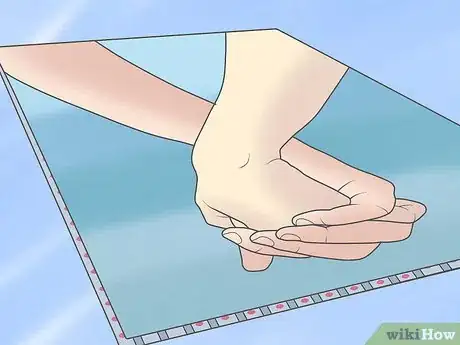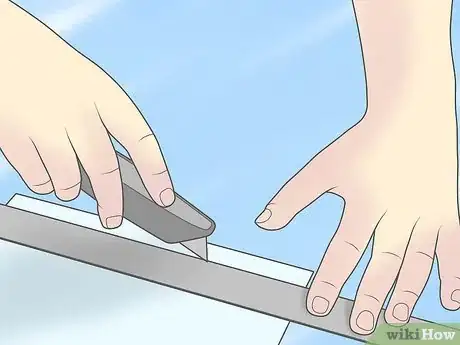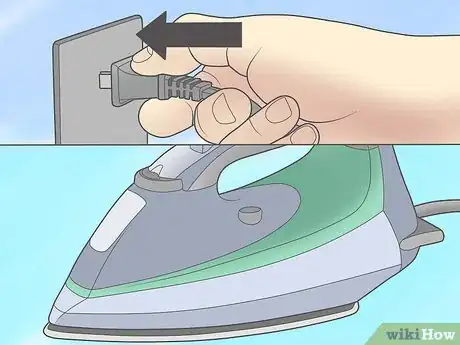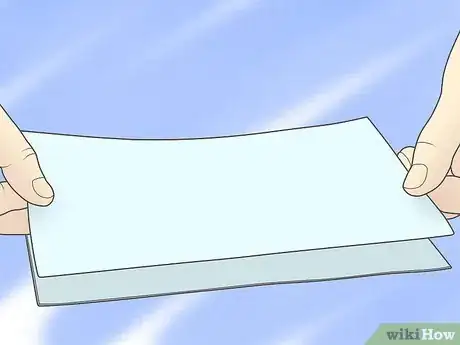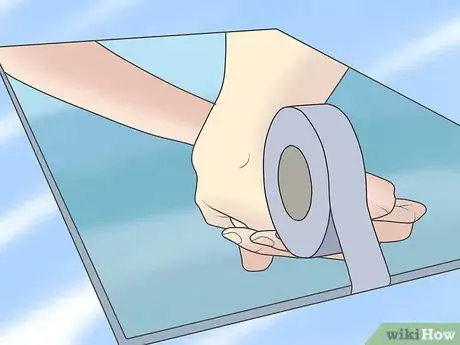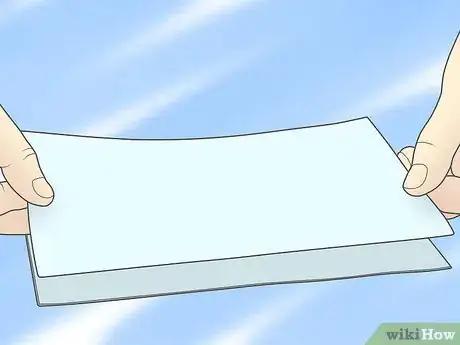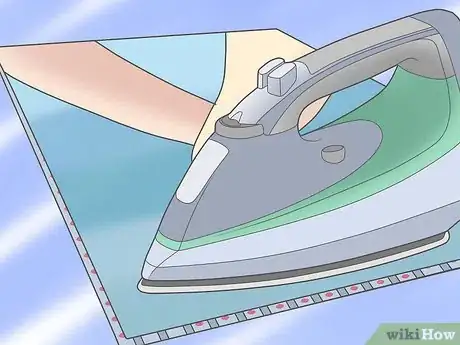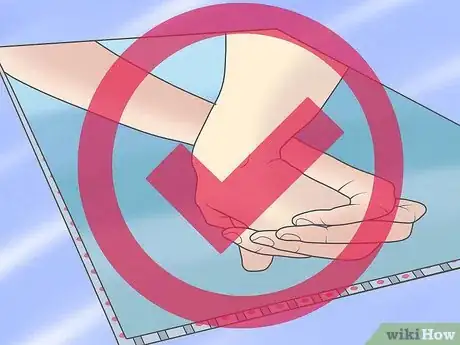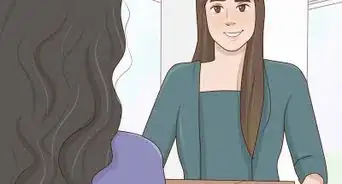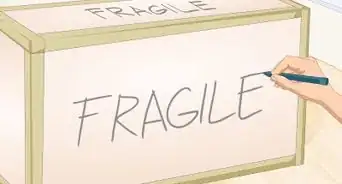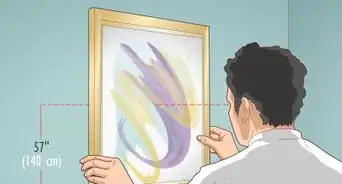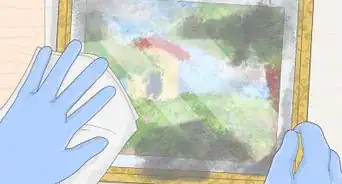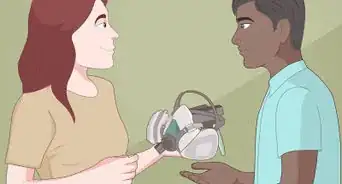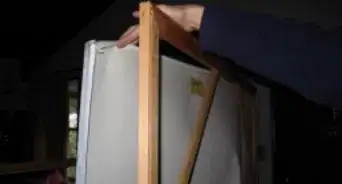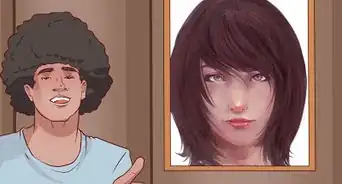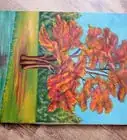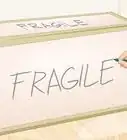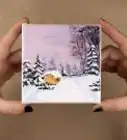This article was co-authored by Claire Wentzel. Claire Wentzel is an award-winning Artist and Strategic Creative Consultant. Her business, Red Rose Studios, is based in Las Vegas, Nevada, where she also serves on the Clark County Public Art Committee. With over 20 years of experience, she specializes in mixed media participatory art, brand messaging, and building organizational culture. She earned her BA in Fine Art with Distinction from the University of Colorado-Boulder and completed a painting residency at the International School of Painting, Drawing, and Sculpture. Her chalk mural work has been featured in EdHat and I Madonnari Italian Street Painting Festival advertising.
This article has been viewed 191,143 times.
There's no need to take your photo or artwork to a professional framer to be dry mounted. If you can use a ruler and perform a little arithmetic, you can dry mount your own artwork at a considerable savings. You'll be left with a beautiful finished print and a full wallet.
Steps
Getting Started
-
1Choose a dry mount paper. There are many different brands of dry mounting paper available on the market today. The paper can be purchased in pre-cut packages or in rolls, depending on the size you are going for. The primary thing to consider when choosing a paper though, is whether or not it is acid-free and archival. Traditionally, dry mounting paper can cause bubbling and damage to prints. For a bit more money though, you can purchase specialty paper that won’t ruin your prints over time. Most dry mounting is also permanent, although there are some options that are removable.[1]
- Fotoflat is dry mounting paper that is removable with low heat after application. On the downside, if your print is exposed to sunlight or heat, it may remove itself from the backing on its own.
- MT5 is a permanent dry mounting paper that requires high temperatures in order to adhere to the print. The con of this paper is that the necessary high temperatures may damage or burn the print.
- ColorMount is a permanent dry mounting paper used specifically on resin-coated papers, but it has a very small range of adhesive temperatures. Too high will cause bubbles to form, while too low won’t make the paper stick.
- Fusion 4000 is a permanent dry mounting plastic often considered superior to the other mounting papers, but when melted can become runny. As a result, some of the paper may transfer onto the front of the print, or the print may shift.
-
2Choose a backing. You can mount a print using dry mount paper to nearly any backing, although there are some made specifically for this purpose. Because dry mounting is permanent in nearly all cases, you need to be certain that you like the appearance of the backing you select. Visit a local art supply store to see the types of backing that are available, or make your own with thin sheets of wood or plastic.[2]
- If you plan to have the edges of the backing act as a frame, be sure that they are painted in a color you like prior to mounting the print.
- Some dry mounting paper can be purchased in package-deals along with the backing board for your print.
Advertisement -
3Cut your print to size. Decide if you are going to have your print bleed-mounted or border-mounted. Bleed-mounted is when the backing and print are exactly the same size, so there is no visible border created by the backing.[3] Border-mounting is when the backing is slightly larger than the print, so as to create a border around the edge. Cut off all excess paper from your print in either case.
-
4Cut your dry mounting paper to size. Your dry mounting paper should be the exact same size, if not only slightly smaller, than the size of your print. If you need to adjust the size of the sheet or roll of dry mounting paper, layer your print over the top and outline it.
- If you’re worried about getting the dry mounting paper the exact same size, measure it to be ⅛ inch short on every side. This way there won’t be any overlap and possible smearing of the heated paper.
-
5Prepare a clothing iron. Although you can use a dry mounting press to dry mount your prints, they tend to be very expensive and not incredibly easy to get your hands on. If you’d rather take the frugal route, a regular clothing iron will work perfectly.[4] Use one that doesn’t have a steam attachment or that allows you to turn the steam off, as any moisture used on the dry mounting paper and print will ruin it.
- It is best to have a separate iron to use for dry mounting from your regular clothing iron, as one that you use on a regular basis is likely to be dirty or have scratches that could ruin your print.
- Instead of purchasing a brand new clothing iron, look for one at a local thrift store and pay half the price. Just make sure the platen is clean and scratch-free so that you don’t damage your prints.
Dry Mounting Your Print
-
1Heat up your iron. Follow the package directions on your dry mounting paper to see what temperature is needed for the mounting process. Typically, this should range between 160–200 °F (71–93 °C). Turn on your iron and allow it to preheat while you begin getting your print prepared for mounting.
-
2Line up your print, paper, and backing. Layer your print over your dry mounting paper and your chosen backing so that everything is centered. Make sure that none of the dry mounting paper is sticking out from under the print, as this could damage the front side of your print when heated.
-
3Tape your print in place. You will start heating the center of your print to dry mount it before you get to the edges, so keep your print in place by taping the edges with painters tape or masking tape. Make sure the print, paper, and backing are all secure before you begin dry mounting, because you won’t be able to move them back into place once you start.
-
4Place a piece of blotting paper over your print. Although your print should withstand heat without damage, direct heat from the platen of the iron could scorch or bubble the ink or paper. Lay a piece of blotting paper over the top of the taped-in-place print, in order to act as a shield against damage.
-
5Place your iron on the center of the print. The heat from the iron will glue the three layers together, keeping them in place for the rest of the mounting process. Let the iron set (without moving it) on the center of the print for 3-5 minutes. When the print is firmly attached to the backing, you can move onto the next section.[5]
-
6Continue mounting the corners with the iron. Follow the same practice as above by moving the iron to each of the corners and edges of the print, and allowing it to sit and heat the dry-mounting paper for 3-5 minutes. Moving the iron around or back-and-forth during this process will make it take longer for the dry-mounting process to complete, so just watch the paper to make sure it isn’t too hot without moving it.
- Each time you are ready to move to a new corner, set the iron in the center and slide it out to the corner. This will remove any bubbles that might have formed under the print from the dry mounting paper.
- Un-tape the sides of the print when you are ready to dry-mount that area. Be careful not to pull the print away from the freshly-mounted backing when you remove the tape.
-
7Finish up. When your print is securely attached to the backing on all sides, then the dry mounting process is complete. Allow it to cool for several minutes, and then remove the paper. At this point, you are finished! Follow up with a picture frame for a truly completed look.
Community Q&A
-
QuestionHow do I make a print smooth when it's wavy?
 Decor42Community AnswerThere are several things that you may try. It depends on what the print is on. If is on paper or photo paper you can try rolling the print so that the nonprint side on the outside. Place a loose fitting rubber band around the print for a couple of days. Unroll it and see if that smooths it out. If not place a heavy book or a stack of books onto the print. Another option is to mount it onto a sheet of heavy card stock. You would need to be quick in applying a spray adhesive to the cardstock then place your print corner to corner while gently smoothing it out. Turn the print over to reveal the cardstock side then place a book, stack of books, or heavy object on the print.
Decor42Community AnswerThere are several things that you may try. It depends on what the print is on. If is on paper or photo paper you can try rolling the print so that the nonprint side on the outside. Place a loose fitting rubber band around the print for a couple of days. Unroll it and see if that smooths it out. If not place a heavy book or a stack of books onto the print. Another option is to mount it onto a sheet of heavy card stock. You would need to be quick in applying a spray adhesive to the cardstock then place your print corner to corner while gently smoothing it out. Turn the print over to reveal the cardstock side then place a book, stack of books, or heavy object on the print. -
QuestionWhere do I buy blotting cloth?
 Community AnswerYou can find blotting cloths at paint stores or hardware stores where paint products are sold.
Community AnswerYou can find blotting cloths at paint stores or hardware stores where paint products are sold. -
QuestionIs there any chance of warping? If I am mounting a collage, for example, the artwork can cause the paper support to be slightly bowed. Will this be flattened out with dry mounting?
 Decor42Community AnswerIf you are doing a collage I suggest to use modge podge or a spray adhesive to hold the prints in place. If not they will not stay positioned and will warp, especially if you live in a hot, dry area.
Decor42Community AnswerIf you are doing a collage I suggest to use modge podge or a spray adhesive to hold the prints in place. If not they will not stay positioned and will warp, especially if you live in a hot, dry area.
Warnings
- If any water escapes from the iron during the mounting process, your photo and the mat could be ruined.⧼thumbs_response⧽
- Take care not to lift the iron while you are working your way from the center to the edges of your print. If you do, you will leave a portion of the print "unstuck", which will cause an air bubble that you will not be able to get out.⧼thumbs_response⧽
- Most, if not all, commercially printed photos are RC, resin coated, and high heat or extended heat time can cause bubbling or burning, and damage the photo. Consider testing the heat time on an unimportant image before pressing your photo for too long with your iron (or with a press, for that matter), as usual press times are often more like 60-90 seconds, but the mounting product you choose will vary the time, as will the heat, and you may not have the temperature degrees marked on your iron. Better to work up to the correct time than ruin the photo. Glossy images are especially susceptible to damage. Also remember that every time you check to see if it stuck, it cools some, so the total time will be different if you leave it, it will take less time.⧼thumbs_response⧽
Things You'll Need
- Iron
- Dry mounting tissue
- Cutting mat
- Utility knife
- Metal ruler
- Mat board
- Art tape
- Blotting paper
Expert Interview

Thanks for reading our article! If you'd like to learn more about dry mounting artwork, check out our in-depth interview with Claire Wentzel.


